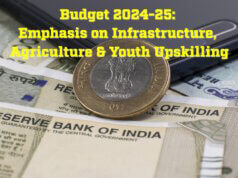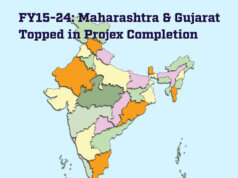 — T. Chitty Babu, Chairman & CEO, Akshaya Pvt. Ltd
— T. Chitty Babu, Chairman & CEO, Akshaya Pvt. Ltd
As a partner in growth and a key player in creating urban living space, the need of the hour for the real estate sector is to relook at the business practice, step out of a project concept and look at collaborative ways in which we can partner with government and the public to build ‘living space’, writes T. Chitty Babu Chairman & CEO, Akshaya Pvt. Ltd who founded the Chennai-based real estate firm in 1995.
While the potential for growth and development in India is undeniable, some amount of uncertainty seems to have crept in, more as collateral fallout of the slump in the global markets which when added to the internal policy paralysis seems to be adding to the impact. But before moving on to the prospects for the realty sector and the direction we are headed, we need to put the right perspective on the realty industry.
We are in the business of creating ‘Living Space’; we build assets that last a lifetime. Real estate has delivered the highest return on investment and most of our projects have a gestation period of two-four years and over 90 per cent of investment in homes is financed through bank loans, which means that unlike other consumer spending/purchase trend, it is very difficult to assess/judge the market sentiments over a short time period. Home buying decisions are made keeping in mind a 15-20 year repayment timeline and future earnings, so a slowdown can cause only a small hiccup to our sector arising due to market sentiments rather than hard ground reality. Also, it is undeniable that there is a shortage of residential space across all categories more so in urban cities given the migration of population to cities.
Having said that let us look at the near-term and long-term prospects for the sector. Being an election year we expect popular schemes and government spending that can lift moods and sentiments (good for us), but that is only a temporary phenomenon and we need to look beyond the election year if we are to create ‘Urban Living Space’. While we have already proved that we can match the best in the world when it comes to constructing landmark buildings, these are restricted to within the four compound walls of the project, as a partner in growth and a key player in creating urban living space the need of the hour is to relook at our business practice, step out of a project concept and look at collaborative ways in which we can partner with Government and the Public to build ‘Living Space’. This means we need to seriously address issues like urban infrastructure, residential infrastructure, civic infrastructure, social infrastructure and commercial infrastructure.
Conversations like policy paralysis, demand stagnation, lack of political will etc. are all good debating points, because these are all symptoms we are talking about and not the cause (the larger picture we are missing). The need of the hour is Government-Industry-People-Collaboration (we need to move beyond the PPP formula); all these symptoms are because of lack of policy foresight, low stakeholder engagement, and very low enforcement, compliance and accountability.
Today, none of the so-called Indian mega city sports basic urban infrastructure (a heavy monsoon shower is enough to bring life to a standstill). We are not talking of governance as a service. There is minimal people participation in governance (except for voting once in five years). Respect for rules, regulations, laws and integrity even at the basic level is missing; these are the cause that needs to be addressed; it is sad that we expect customers to pay lakhs of rupees to own a space of his own while we seem to care little on the surrounding space which is part of our urban habitat. While we are able to create world-class private/individual space for the people we need to address the larger urban/city space that will help shape our economy and drive growth and development.
If you expand on the above thought and look at how to make governance as a service a reality in the realty sector, for example, we not only need a single window clearance in the process of land acquisition, development plan approval, regulation clearance etc., but we also need to engage with the civic bodies and partner with them in developing the surrounding areas to make them habitat ready. While competition is perfectly alright in developing projects, the builder and developer community needs to come together and work on getting the civic and residential infrastructure in place, something that will benefit the entire industry.
It is not lack of funds but the lack of foresight and intent to carry out and complete the task which is the root cause of the appalling state of urban living space in India; and the blame for this rests equally with all of us and not the government alone. Addressing this at a macro level, the government’s action and policies need to create value and help build asset on the ground which means subsidies and giveaways cannot go on and on; somewhere subsidies need to be converted into an empowerment/uplifting tool; instead of giving rice at a very low cost, we need to ensure that minimum wage is enforced, something that can raise the standard of life of the BOP category.Likewise, for each of our actions we need to look at the outcome. Doing so will ensure that we are building a robust future customer base that will drive growth and development in the country.
What is missing, however, is sufficient public conversation and engagement at both policy level and implementation level that can measure the outcome and bring accountability and responsibility into our collective lives. After all, individuals make up civil society and it is our responsibility to hold ourselves accountable for our actions. In simple terms, to survive and grow as a sustainable economy, India needs a long-term visionary approach and not ‘policy myopia’ plus the gumption to see through the plan.











